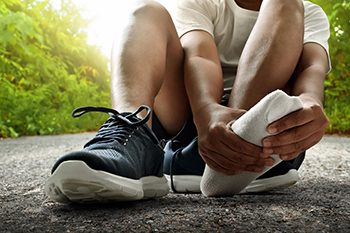
Research reveals that nearly half of recreational runners sustain injuries, often affecting the Achilles tendon, calf, knee, ankle, lower leg, feet, and toes. Various factors contribute to injury risk, including running mechanics, footwear, and abrupt mileage increases. Fortunately, effective strategies exist to prevent running injuries before they disrupt your routine. It is essential to understand that injury prevention is complex, with factors like anatomy, history of injuries, and training methods playing roles. Each runner is unique, possessing distinct anatomical traits and injury histories, making injury prevention a challenging task. To reduce injury risk, experts recommend focusing on building a strong body, maintaining proper form, and choosing suitable footwear. Achieving a balance among these factors can significantly lower the likelihood of injuries, ensuring a rewarding and injury-free running experience. It is also advisable to schedule an appointment with a podiatrist for personalized advice on preventing running injuries.
All runners should take extra precaution when trying to avoid injury. If you have any concerns about your feet, contact Patrice Antero, DPM of Tuscany Podiatry. Our doctor will treat your foot and ankle needs.
How to Prevent Running Injuries
There are a lot of mistakes a runner can make prior to a workout that can induce injury. A lot of athletes tend to overstretch before running, instead of saving those workouts for a post-run routine. Deep lunges and hand-to-toe hamstring pulls should be performed after a workout instead of during a warmup. Another common mistake is jumping into an intense routine before your body is physically prepared for it. You should try to ease your way into long-distance running instead of forcing yourself to rush into it.
More Tips for Preventing Injury
- Incorporate Strength Training into Workouts - This will help improve the body’s overall athleticism
- Improve and Maintain Your Flexibility – Stretching everyday will help improve overall performance
- “Warm Up” Before Running and “Cool Down” Afterward – A warm up of 5-10 minutes helps get rid of lactic acid in the muscles and prevents delayed muscle soreness
- Cross-Training is Crucial
- Wear Proper Running Shoes
- Have a Formal Gait Analysis – Poor biomechanics can easily cause injury
If you have any questions, please feel free to contact our office located in Tuscaloosa, AL . We offer the newest diagnostic and treatment technologies for all your foot care needs.



